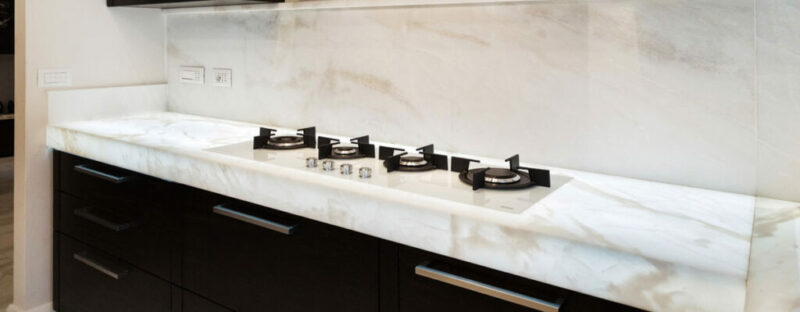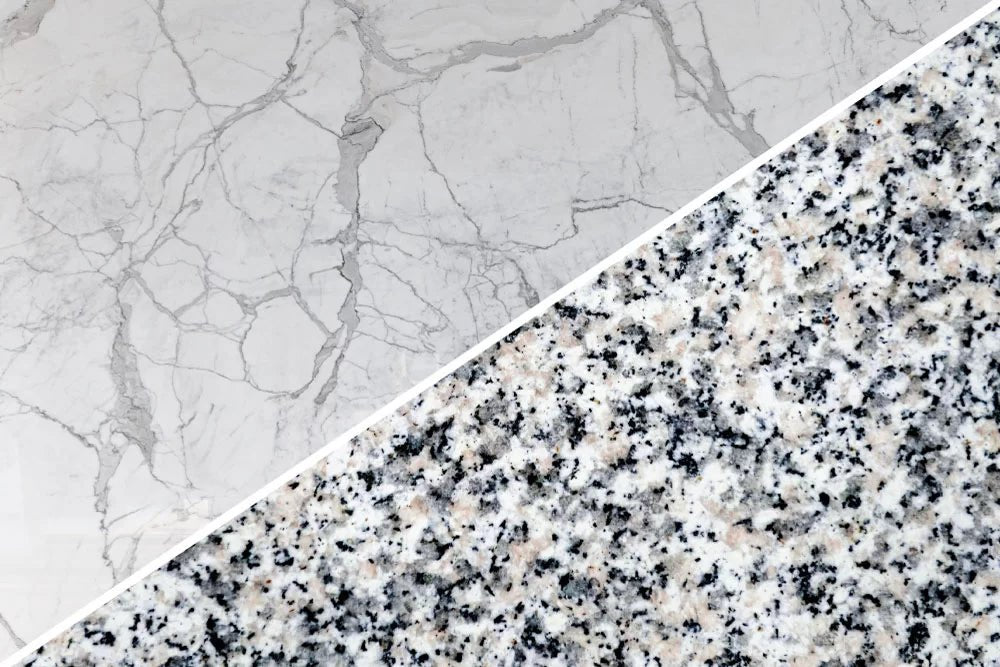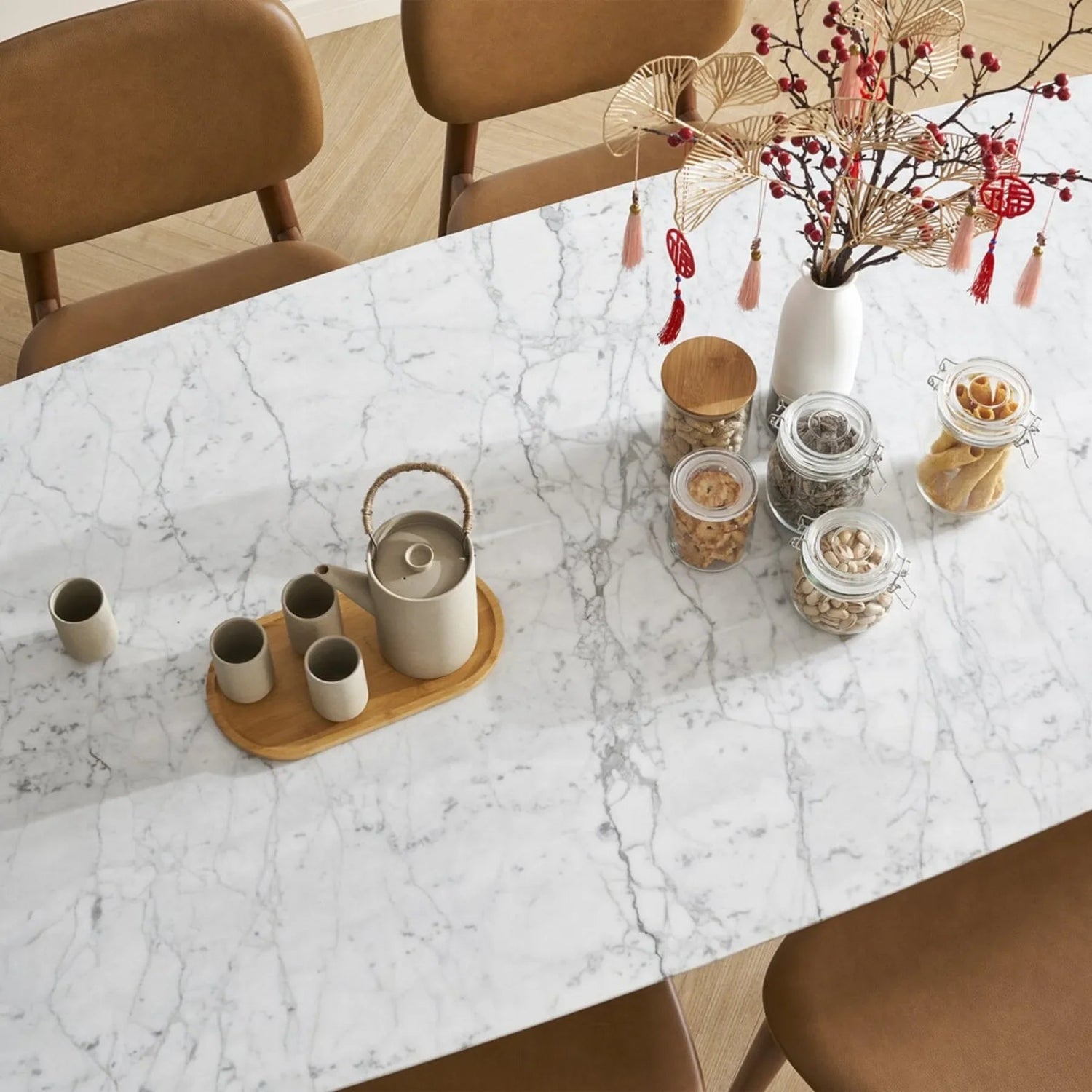When it comes to choosing materials for luxury furniture like, two natural stones often come up: marble and granite. Both have been cherished for centuries for their timeless beauty, durability, and versatility, making them popular choices in both modern and traditional design. But what is the difference between these two stones, and how do their unique properties affect their use in furniture design?
In this article, we’ll explore the geological, chemical, and aesthetic differences between marble and granite, and how those differences influence their suitability for custom marble furniture like vanities, tables, and bathtubs.

Geological Differences: How Marble and Granite Form
The primary difference between marble and granite begins in the earth’s crust. Granite is an igneous rock, formed from molten magma that cools slowly deep underground. This cooling process creates a dense, durable structure filled with silicates. Because of this, granite is particularly hard and tough—qualities that make it resistant to scratches, heat, and other damage.
On the other hand, marble is a metamorphic rock. It forms when limestone undergoes heat and pressure deep within the earth. The transformation process alters its chemical composition, turning it into the crystalline material we recognize as marble, made predominantly of calcium carbonate. This structure is what gives marble its characteristic veins and elegant look.
Simply put, granite forms from magma, while marble forms from sedimentary materials that have undergone metamorphosis.
Chemical Differences: Durability and Resistance
When it comes to marble furniture, the chemical properties of marble and granite play a significant role in their respective uses.
Granite, rich in silicates, is incredibly tough and resistant to scratches, acids, and wear. It’s an excellent choice for furniture that needs to withstand heavy usage, such as countertops or kitchen islands. The stone’s resilience makes it a top contender for granite bathroom vanities and granite bathtub surrounds, where exposure to moisture and cleaning products is constant.

Marble, on the other hand, is more porous and susceptible to staining and scratching, especially from acidic substances like wine or citrus juices. This is why it’s often recommended for luxury bathroom furniture—where marble vanities, tubs, and sinks not only enhance the aesthetic but are less prone to heavy contact. While marble is stunning and adds an element of opulence, it requires more care and maintenance to ensure its beauty lasts over time.
Aesthetic Differences: The Timeless Elegance of Marble vs. the Speckled Charm of Granite
One of the most striking differences between marble and granite is their appearance, making it a critical consideration when selecting a material for bespoke furniture.
Granite is known for its speckled or granular appearance, created by the variation in minerals such as quartz, mica, and feldspar. This pattern gives granite a more uniform and textured look, which can be ideal for contemporary furniture such as granite coffee tables or dining tables. If you're looking for a stone that provides a strong, bold look with a mix of colors, granite may be the material for you.
Marble, on the other hand, is cherished for its irregular veins and swirling patterns. These natural veins create a unique, luxurious look that makes marble an enduring favorite in high-end furniture designs. The beauty of marble lies in its ability to blend with a variety of styles, from classical to modern. The variety of colors and patterns in marble—ranging from pure white Carrara to rich, dark Calacatta—offers endless design possibilities.
How Marble and Granite Perform in Furniture Design
When choosing between marble and granite for bespoke furniture, it’s important to consider their durability, maintenance, and style:
-
Marble for Luxury and Aesthetics: Marble is typically preferred for luxury furniture such as bathtubs, vanities, and dining tables because of its elegance and ability to elevate any space. The veins and colors of marble make it a perfect choice for those who want a statement piece that exudes sophistication.
-
Granite for Durability: Granite is the material of choice when durability is paramount. It’s perfect for granite countertops, kitchen tables, and vanities that require high resistance to wear and tear. While granite’s aesthetic may be more uniform, its robustness makes it ideal for busy spaces that experience a lot of traffic, such as kitchens or high-use bathrooms.
Maintenance: Keeping Your Marble and Granite Furniture Pristine
In terms of maintenance, marble does require a bit more attention. Its porous nature means it can absorb liquids and stain more easily than granite, particularly from acidic substances. Regular sealing is crucial to protecting marble from these potential damages. Additionally, because marble is softer, it’s more prone to scratching or chipping compared to granite.
Granite, being more resistant to staining, scratching, and heat, is easier to maintain, especially in high-traffic areas like kitchens. That said, granite surfaces also require sealing, but they generally need less care than marble, making them suitable for surfaces that see a lot of action, like granite kitchen countertops.
Which is Better for Your Bespoke Marble Furniture?
The decision between marble and granite for your custom-made furniture largely depends on the look you desire, the functionality needed, and how much maintenance you’re willing to invest in.
-
Choose marble if you’re looking for timeless elegance, unique patterns, and a high-end finish that will enhance spaces like bathrooms and living rooms. Marble bathtubs, vanities, and dining tables are perfect examples of furniture that can showcase marble’s inherent beauty.
-
Opt for granite if you prioritize durability, especially in high-traffic or functional areas such as kitchens. Granite countertops or granite bathroom vanities are excellent for homes where the stone’s ruggedness and resistance to wear are essential.
Both stones offer unparalleled beauty and long-lasting value—so the choice comes down to your specific needs and style preferences.
In conclusion, whether you choose marble or granite for your next piece of bespoke furniture, both stones bring a unique set of qualities that can elevate your home’s design. The key is to choose the one that best suits your lifestyle, aesthetic preferences, and maintenance capacity. No matter your choice, you’ll be investing in a material that has stood the test of time for centuries, and will continue to add elegance and sophistication to your space.





